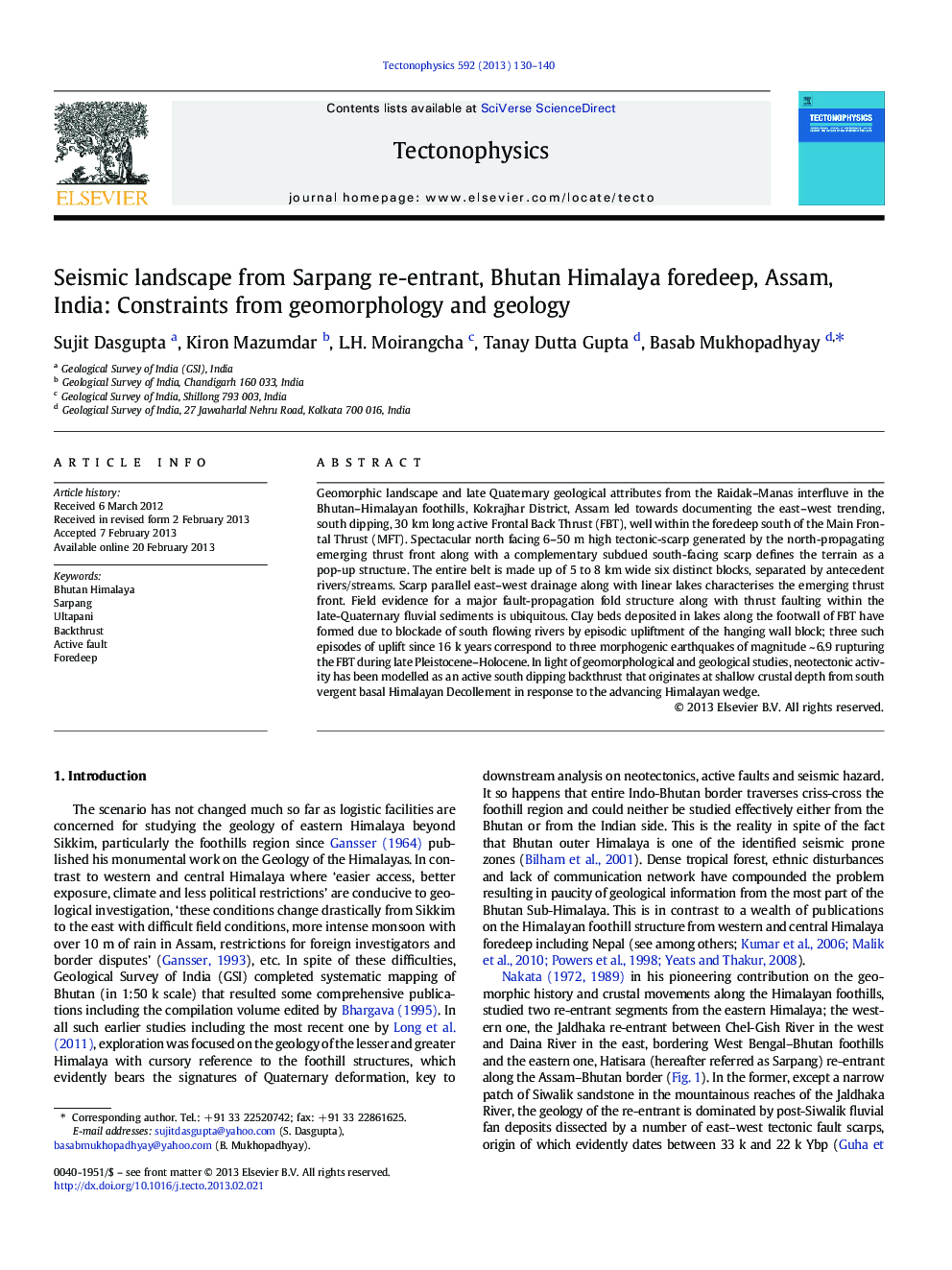| کد مقاله | کد نشریه | سال انتشار | مقاله انگلیسی | نسخه تمام متن |
|---|---|---|---|---|
| 4692382 | 1636793 | 2013 | 11 صفحه PDF | دانلود رایگان |
Geomorphic landscape and late Quaternary geological attributes from the Raidak–Manas interfluve in the Bhutan–Himalayan foothills, Kokrajhar District, Assam led towards documenting the east–west trending, south dipping, 30 km long active Frontal Back Thrust (FBT), well within the foredeep south of the Main Frontal Thrust (MFT). Spectacular north facing 6–50 m high tectonic-scarp generated by the north-propagating emerging thrust front along with a complementary subdued south-facing scarp defines the terrain as a pop-up structure. The entire belt is made up of 5 to 8 km wide six distinct blocks, separated by antecedent rivers/streams. Scarp parallel east–west drainage along with linear lakes characterises the emerging thrust front. Field evidence for a major fault-propagation fold structure along with thrust faulting within the late-Quaternary fluvial sediments is ubiquitous. Clay beds deposited in lakes along the footwall of FBT have formed due to blockade of south flowing rivers by episodic upliftment of the hanging wall block; three such episodes of uplift since 16 k years correspond to three morphogenic earthquakes of magnitude ~ 6.9 rupturing the FBT during late Pleistocene–Holocene. In light of geomorphological and geological studies, neotectonic activity has been modelled as an active south dipping backthrust that originates at shallow crustal depth from south vergent basal Himalayan Decollement in response to the advancing Himalayan wedge.
► Neotectonic movement of a back thrust, Bhutan Himalayan foothills is constrained.
► It is constrained by field geomorphological and geological evidence.
► Back-thrust originated from decollement in response to advancing Himalayan wedge.
► Clay beds deposited from blockade of rivers show three episodes of uplift since 16 k
► 3 earthquakes (~ 6.9 M) rupturing entire FBT in Pleistocene–Holocene were postulated.
Journal: Tectonophysics - Volume 592, 19 April 2013, Pages 130–140
